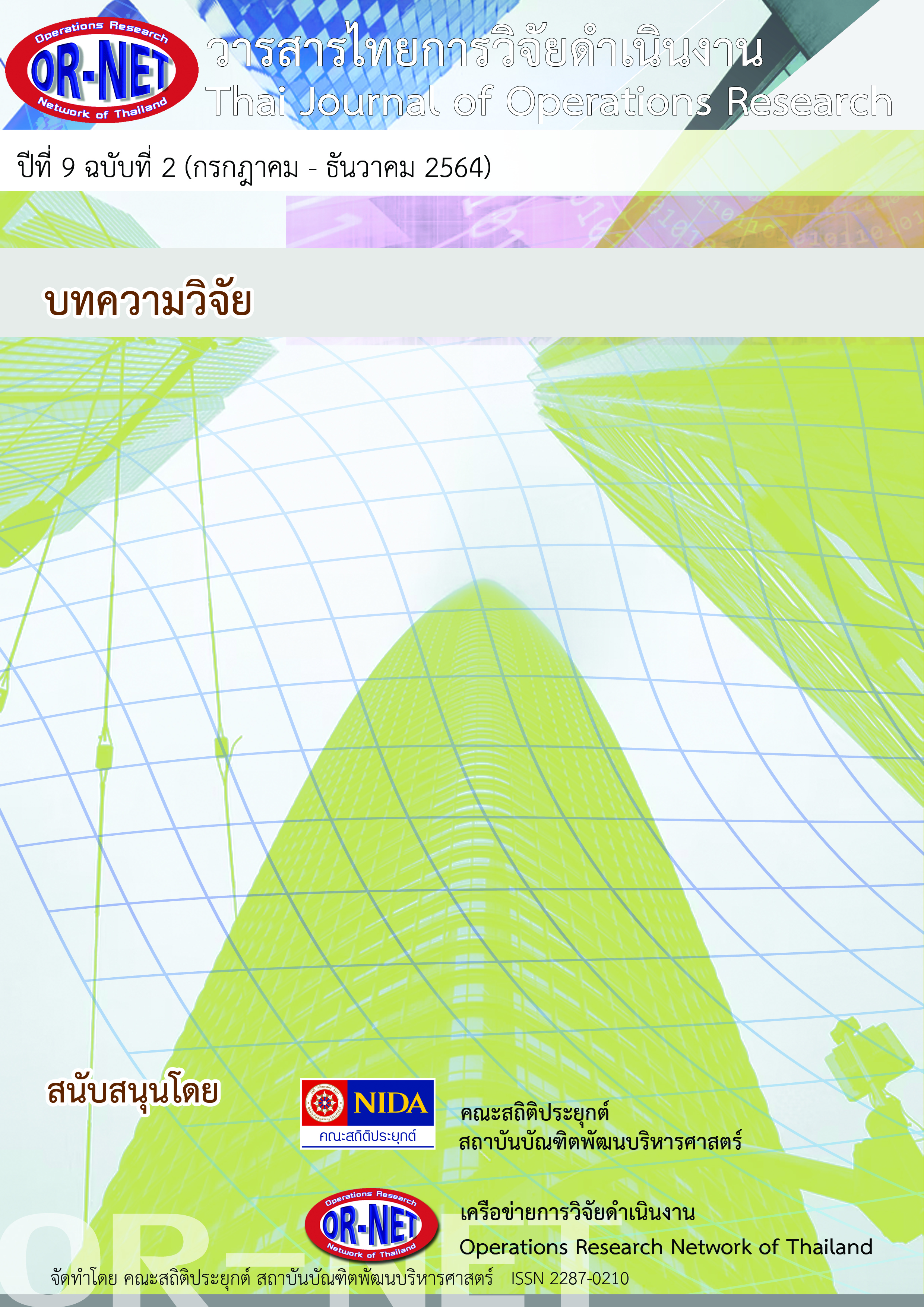The development of internal audit process analysis using process mining and machine learning techniques
Keywords:
process mining, machine learning, process improvement, inductive miningAbstract
Follow-up and develop the internal audit process to be faster, keep up with the situation and reflect the actual operations, it is part of good organization management. But monitoring and improving operations on traditional conference table can be difficult and inefficient, including often using experiences and feelings of executives to solve problems or using the forecasted information alone may not be sufficient to reflect actual performance and unable to fix various bugs at the point. This research is using of Process Mining and Machine Learning techniques to help analyze event logs from the internal audit management system to find ways to develop and improve the internal audit process to be more efficient and suitable.
References
[2] E.R. Mahendrawathi, S. O. Zayin and F. J. Pamungkas, “ERP post implementation review with process mining: a case of procurement process,” Procedia Computer Science., vol. 124, pp. 216-223, 2017.
[3] P. Zerbino, D. Aloini, R. Dulmin and V. Mininno, “Process-mining-enabled audit of information systems: methodology and an application,” Expert Systems with Applications., vol. 110, pp. 80-92, 2018.
[4] O. Tamburis and C. Esposito, “Process mining as support to simulation modeling: a hospital-based case study,” Simulation Modelling Practice and Theory., vol. 104, 2020.
[5] M. Werner and N. Gehrke, "Multilevel process mining for financial audits," IEEE Transactions on Services Computing., vol. 8, no. 6, pp. 820-832, 2015.
[6] M. Jans, J. M. van der Werf, N. Lybaert and K. Vanhoof, “A business process mining application for internal transaction fraud mitigation,” Expert Systems with Applications., vol. 38, no. 10, pp. 13351-13359, 2011.
[7] S. A. Shershakov and V. A. Rubin. “System runs analysis with process mining,” Modelirovanie I Analiz Informacionnyh Sistem., vol. 22, no. 6, pp. 818-833 , 2015.
[8] E.R. Mahendrawathi, H. M. Astuti and A. Nastiti, “Analysis of customer fulfilment with process mining: a case study in a telecommunication company,” Procedia Computer Science., vol. 72, no. C, pp. 588-596, 2015.
[9] I. Hwang and Y. J. Jang, "Process mining to discover shoppers’ pathways at a fashion retail store using a wifi-base indoor positioning system," IEEE Transactions on Automation Science and Engineering., vol. 14, no. 4, pp. 1786-1792, 2017.
[10] R. Umer, T. Susnjak, A. Mathrani and S. Suriadi. “On predicting academic performance with process mining in learning analytics,” Journal of Research in Innovative Teaching & Learning., vol. 10, no. 2, pp. 160-176, 2018.
[11] W. v. d. Aalst, Process Mining : Data Science in Action. 2nd ed., 2016.
[12] A. Medeiros, A. Weijters and W. Aalst, “Genetic process mining: an experimental evaluation,” Data Mining and Knowledge Discovery., vol. 14, no. 2, pp. 245-304, 2007.
[13] M. Bozkaya, J. Gabriels and J. M. van der Werf, "Process diagnostics: a method based on process mining," in 2009 International Conference on Information, Process, and Knowledge Management., pp. 22-27, 2009.
[14] E. Rojas, J. Munoz-Gama, M. Sepúlveda and D. Capurro, “Process mining in healthcare: a literature review,” Journal of Biomedical Informatics., vol. 61, no. C, pp. 224-236, 2016.
[15] A.J.M.M. Weijsters, W.M.P. van der Aalst and A.K. Alves de Medeiros, “Process mining with the heuristics miner algorithm,” Technische Universiteit Eindhoven, Tech. Rep. WP., vol. 166, pp. 1-34, 2006.
[16] P. Kröckel and F. Bodendorf, “Process mining of football event data: a novel approach for tactical insights into the game,” Frontiers in Artificial Intelligence., vol. 3, 2020.
[17] M. Song, C. W. Günther, W.M.P. van der Aalst, “Trace clustering in process mining,” in International conference on business process management. Springer, Berlin, Heidelberg, p. 109-120, 2008.
[18] Process Mining Group of the Fraunhofer Institute for Applied Information Technology, “PM4Py,” [Online]. Available: https://pm4py.fit.fraunhofer.de/documentation#discovery [Accessed 25 January 2021].




